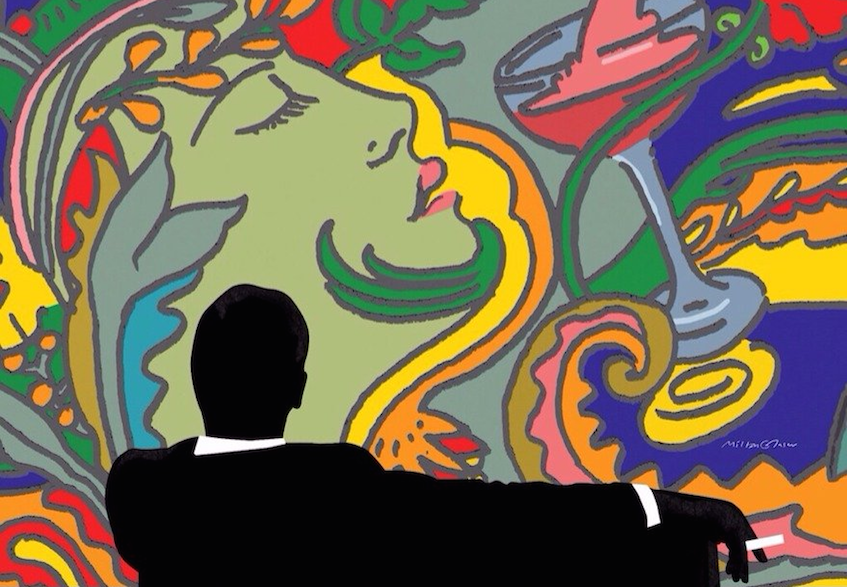Print Edition: June 3, 2015
 A man walks into an advertising firm. He’s half an hour late for his presentation. He’s hungover. It’s a normal day.
A man walks into an advertising firm. He’s half an hour late for his presentation. He’s hungover. It’s a normal day.
He’s supposed to be pitching a commercial for yogurt in a tube or a thing like that. It doesn’t really matter. He takes his time getting to the meeting room he should already be sitting in. “Should.” It doesn’t really matter. The door opens and the clients inside are definitely annoyed, but, before they can voice it, the ad man begins to speak and closes the door. Fifteen minutes pass and the door opens again. The clients — old men who hate change — come out, one by one, weeping and grinning in spiritual ecstasy. Their lives are changed forever, and the ad firm is $1 million richer.
It doesn’t really matter. The ad man lights a cigarette, bangs a secretary, and reads Ferlinghetti. It’s a normal day.
This is Mad Men on the surface: ridiculously cool and pointlessly impressive. The show, however, is not just a surface of cool, cool spectacle, but an exploration of those surfaces and why they work — things like the graphics on a soup can, the fashion of a subculture, the construction of one’s identity, and so on.
For example, the surreal title sequence is both visually impressive and carefully philosophical. It shows a man falling to his death from a top-storey window of a building on Madison Avenue, tumbling through a nightmare of advertisements. Rather than hit the ground, he lands safely and suavely into a couch, in an office, on the top storey of a building on Madison Avenue. This man can’t even kill himself without becoming something, even if it’s just the same something he was before.
Recappers on the internet like to talk about how very neat Mad Men is as a period piece, how it really shows how bad misogyny and –isms were back in the sixties, how much we ought to hate or love the central Mad Man, Don Draper. These themes are really only on the surface of the show, and I don’t like how they’re talked about as if they were themes of the past that were merely interesting today. So, as Draper says, “If you don’t like what they’re saying, change the conversation.”
Mad Men as a singular body of work is best for the questions it forces the engaged viewer to ask about identity and authenticity today. Yes, the show takes place in the crazy ‘60s — but just how possible is it to authentically grasp the turbulence of a time, and what that turbulence means, while living through it? Yes, everyone hates those darn sodomites — but how often is hatred anything more than posture for acceptance? And yeah, Don Draper is a creative genius who is also incompetent as a husband, father, employee, and boss — but to what degree are husband, father, employee, and boss meaningful roles in the first place? To what degree does a creative genius have the responsibility to use their creativity for anything?
If questions about life and how to live it don’t interest you, you will still enjoy Mad Men for its coolness. Just don’t be surprised when it actually makes you think — and yes, feel — something. Don’t be surprised when it revives some engagement with life itself, and everything at once seems weird and correct, and you’re baffled by the beautiful impossibility of the statement: it’s a normal day.

